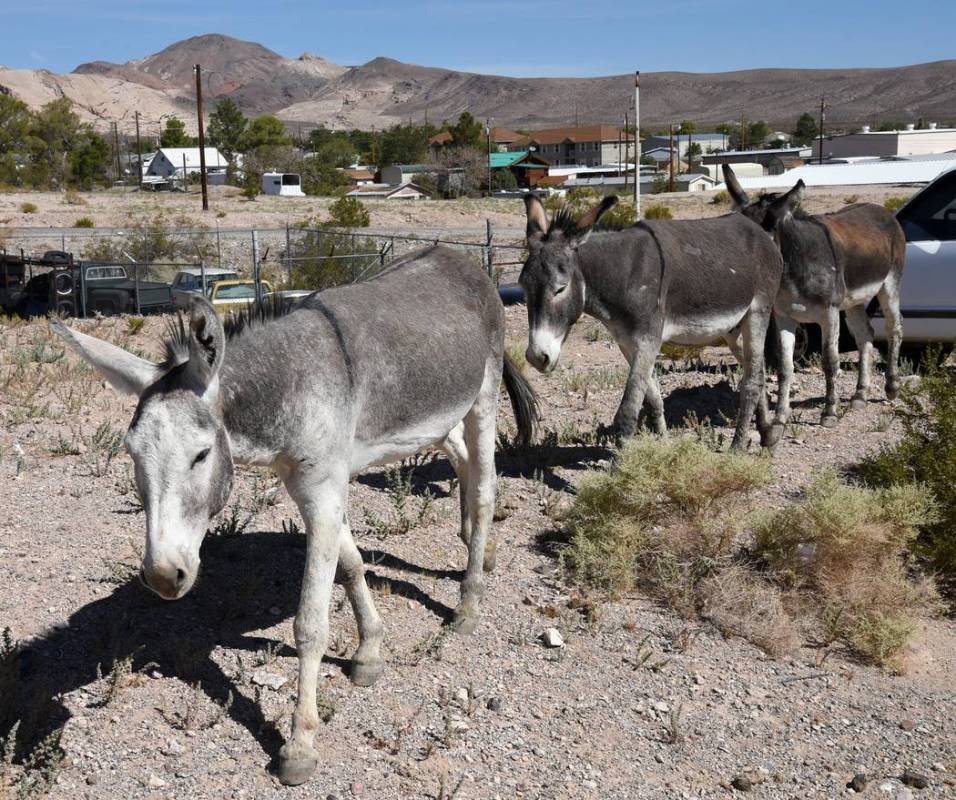
What do you do with too many burros? The U.S. Bureau of Land Management’s solution to that problem is to gather as many as possible and take them to holding facilities.
But how burros are too many? The BLM has a calculated number that can be supported by the forage and water in a given area without degrading the plant life or endangering native species. In the case of the Bullfrog Herd Management Area near Beatty, too many is more than between 58 and 91 burros.
Currently, the wild burro population in the area is estimated to be 828. The BLM says that this overpopulation of burros not only causes damage to the land, but poses a “nuisance in the town of Beatty and a safety risk along U.S. Highway 95.”
Some Beatty residents have been putting out water for the burros that wander through town, and some have been feeding them. Tourists also regularly feed them when they approach their cars. As a result, many of the animals have become accustomed to people and vehicles. They will often approach vehicles and stand in roadways, not even moving when honked at.
Some people think Beatty is like Oatman, Arizona, which is known for the burros that roam the town. However, Oatman does not have the fast-moving traffic Beatty does, and burros are frequently struck and killed by vehicles on the highway near Beatty.
Although folks generally consider them an interesting bit of local “color,” burros sometimes get into waste containers in Beatty and scatter garbage, a problem that has been lessened by the use of dumpster bins. They also use landscaping as a convenient source of food if the plants are not adequately fenced.
Using corrals baited with water and hay, the BLM is conducting a gathering which aims to remove approximately 600 burros. Because there is not room enough for more in holding facilities, this will still leave around 200 excess burros in the area.
Captured burros will be transported to a holding facility in Axtell, Utah, where they will be checked by a veterinarian and eventually made available for adoption or sale.
Richard Stephens is a freelance reporter living in Beatty.